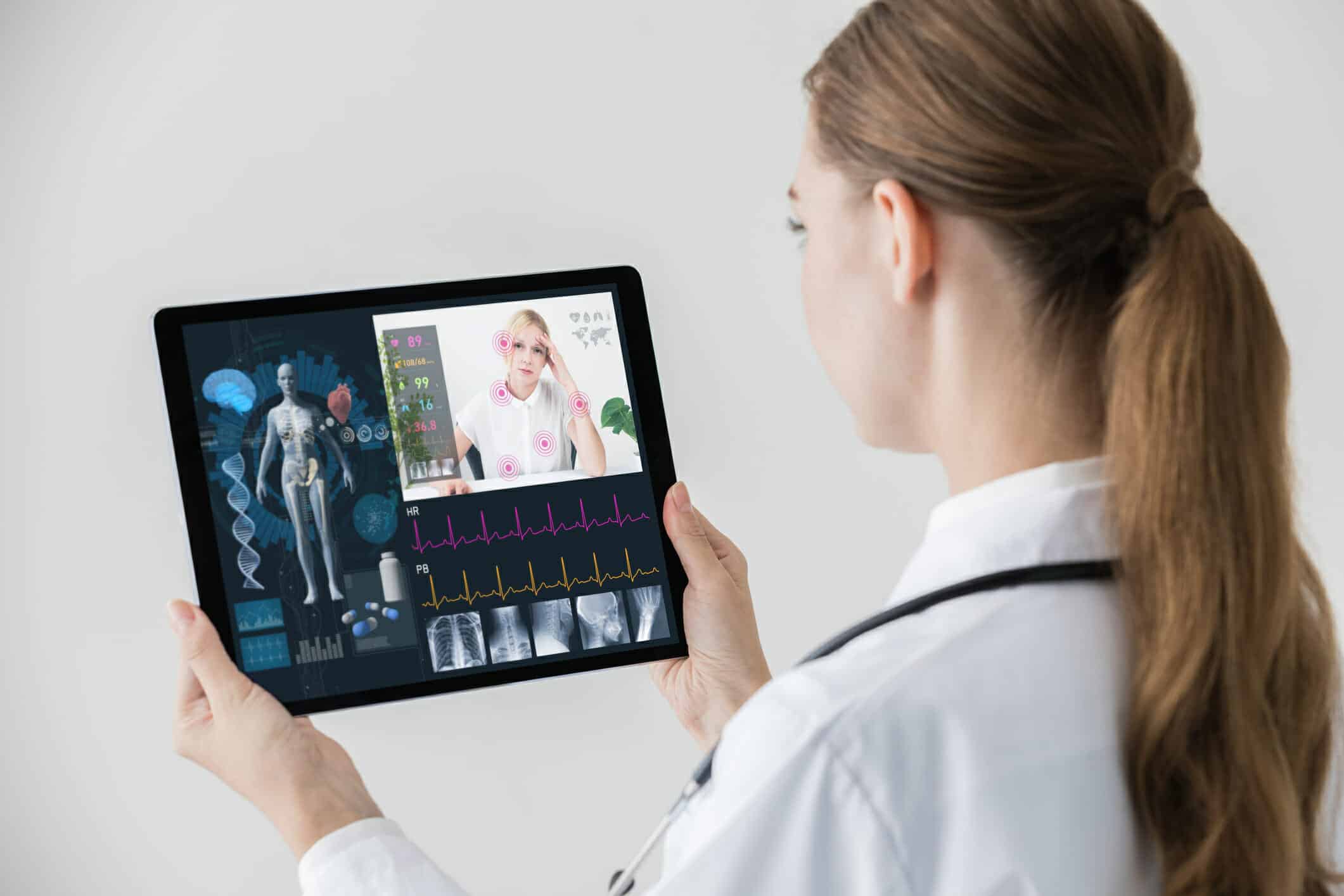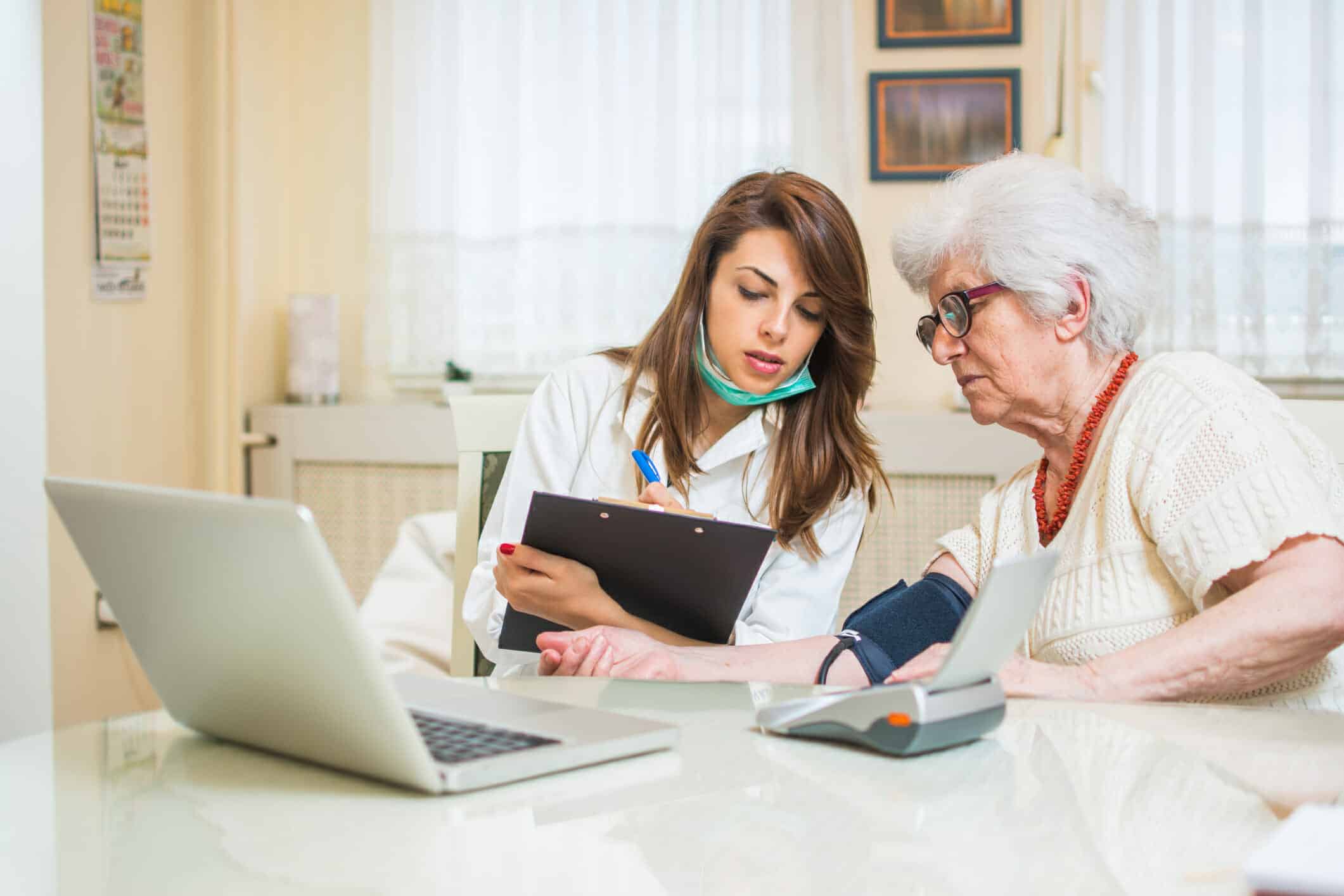On May 10th, the President of the German Medical Association Ulrich Montgomery announced that the German Medical Congress had accepted the proposal for loosening the ban on remote treatment. Accordingly, certain treatments and consultations may henceforth also be carried out by telephone, video/live chat, app or web portal. The communication between patient and doctor via SMS is also gaining importance.
It was the 121st German Medical Conference, which took place in the Erfurt Exhibition Hall and which had a concise topic for debate. According to §7 (4) of the model occupational code, consultations or even remote treatments via telecommunications media were hitherto regarded as prohibited in principle. Loosening this remote treatment law not only means a major change with new challenges for physicians, but also for patients. To make a remote diagnosis of a person you’ve never met before seems unthinkable – even irresponsible. On the other hand, many citizens have long been seeking advice on internet forums, exchanging experiences with each other and advising on entire therapies. Last but not least, the doctors themselves use digital media to remotely transfer X-ray images, laboratory data and findings in order to coordinate with one another. The possibilities are there, now backed by official recognition.
Medical Congress endorses remote treatment through digital media – how does the new regulation affect the patient?
Digital communication shall supplement, not disturb, the doctor-patient relationship
The doctors have made a clear decision pro telemedicine”, said Ellen Lundershausen, President of Thuringia State Chamber of Medicine.
This opens up many promising opportunities for medical offices, hospitals, emergency services and institutions in regards to remote treatments. If it is medically acceptable and the duty of care in diagnosis, consultation and documentation is ensured, the patient may even be cared for exclusively via telemedia, even without personal first contact in individual cases.
However, anyone who believes that this is only interesting for young people, who are familiar with the handling of smartphone and other media, is wrong. In fact, the shortage of doctors in rural areas is one of many reasons why it was about time to advance the change in medical care in favor of remote treatments. Long waiting times, drives and just the sheer effort of getting to a doctor while being sick lets young and old people alike hope for the new regulation.
The focus is on telephone consultations as well as video conferences and live chats, which give the doctor a better picture of the patient’s condition. At the same time, the number of SMS notifications to improve patient care is increasing. Numerous medical practices already use the service of professional SMS providers like seven to contact their patients individually or completely automatically, whether as a reminder of the next routine check-up, pick-up notes for prescriptions, appointment confirmations or the announcement of courses and events, such as blood donation campaigns. High accessibility rates via SMS, uncomplicated handling even with older mobile phone models and above all the secure transmission of data-protection-relevant contents speak for the confidence that patients can build up to their doctor.
Will there soon be discounter-style doctors and sick-certificate-shops?
Not only during the medical conference there was a very passionate exchange about the pros and cons. Nationwide, affected people discussed in detail about the risks of such loosening of remote treatment laws – for example, the foundation for patient protection, which fears a blunting of the quality of treatment. Already, fewer and fewer doctors are taking enough time to listen to their patients properly. Like on an assembly line, the consultation rooms are frequented and yet the waiting times are getting longer and longer. For appointments with the ophthalmologist you may wait for more than a month – without an end in sight.
If telemedia takes up remote treatment at this point, it will save both parties a lot of time. The temptation to attribute even less importance to quality is there, but the implementation of the new regulation so far shows very clearly that both patients and doctors are using telemedicine carefully. Patients can think carefully about what they are writing instead of sitting perplexedly in the treatment room, where half of the symptoms or the course of the disease has long been forgotten and physicians are aware of the risk of incorrect diagnoses and therapies. Because every remote treatment is documented carefully, there is hardly any room for botching.
Anyone who thinks they need just grab a sick-certificate and then have a few days off will soon sober up though. Even with minor issues, a doctor in a remote treatment session will examine exactly what symptoms are present and what treatment measures are useful.
Some websites offer medical certificates, prescriptions and medicine dispatch simply by mouse click – but even here a doctor must establish contact to the patient, the website only mediates.
On the other hand, self-initiated therapies were already common before the decision of the Medical Congress. For example, anyone can send saliva samples to the lab for evaluation, without any doctor, at own expense and of course at own risk.
How do patients deal with the new possibilities of remote treatment?
Parallel to the General Data Protection Regulation, which will come into effect on May 25th, there is a great need for discussion in many waiting rooms. Because even some medical assistants and nurses are not quite sure what they have to consider, the topics are sometimes addressed “across the counter”. The older generation in particular is feverishly involved. Is it still allowed to loudly tell the own telephone number? Why can’t the daughter just pick up the recipe and what if you miss the call from your doctor’s practice? There’s much ambiguity and above all uncertainty, where it should be uncomplicated.
Of course, the exchange between doctor and patient in remote treatments is subject to to the new General Data Protection Regulation (GDPR). Its specifications are mandatory in the technical implementation of web platforms, apps, video and audio transmission. Basically, the new form of treatment distinguishes between teleconsultation (e.g., video / telephone conversations via web portal, app or telephone), telediagnostics (e.g., video conferencing with image and data transmission), and telemonitoring (e.g., monitoring of readings through data transmission via web portal, app, or display devices).
While psychological and emotional care by SMS, telephone and email rely predominantly on anonymity – for example the helpline for children – other institutions pursue a preventive purpose. For example, the EMOX Foundation supports smokers in quitting by grabbing their mobile phone instead of a cigarette and writing an SMS to get the real worries and causes under control. Such projects have been very successful for years and are becoming increasingly popular.
Thus, the step to medical care via telecommunications is obvious to some. It is also easier for many patients to open up about intimate problems if they can talk/write about their situation as impersonally as possible. The communication via SMS also allows a free time management, so that a message from the doctor can also be answered on the go or while working.
For anyone who still has a general trust problem, it’s advisable to get to know the appropriate physician in one or two appointments and only then, if necessary, to continue the therapy as a remote treatment. Thanks to the new GDPR, patients can always view the data stored about them, even which third-party providers and telecommunications providers they are transmitted by.
How do you feel about remote treatment options? Let us know in the comments below.
Best Regards
Header picture by AndreyPopov via iStock.com


